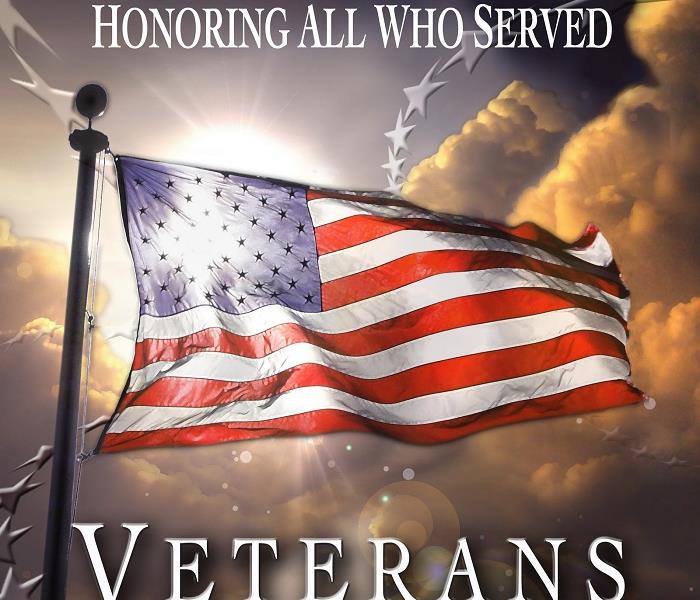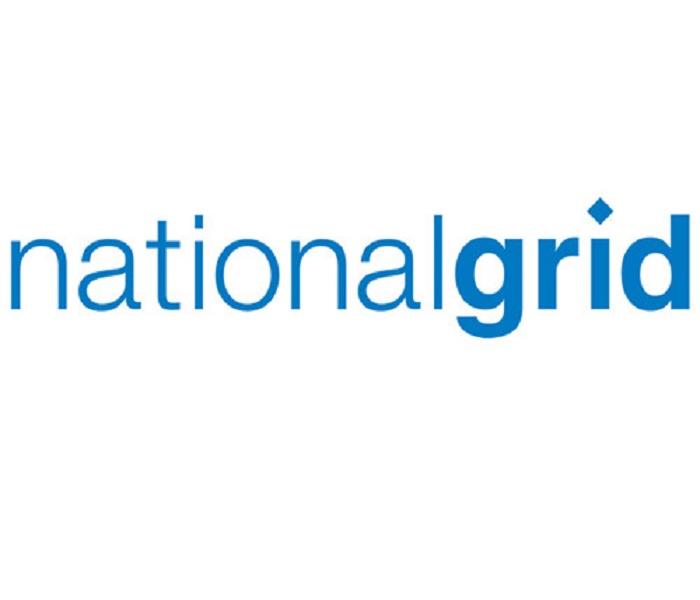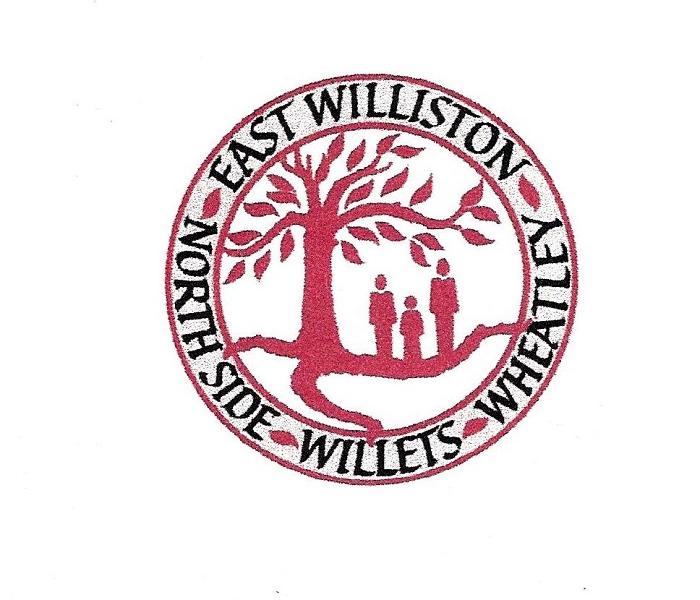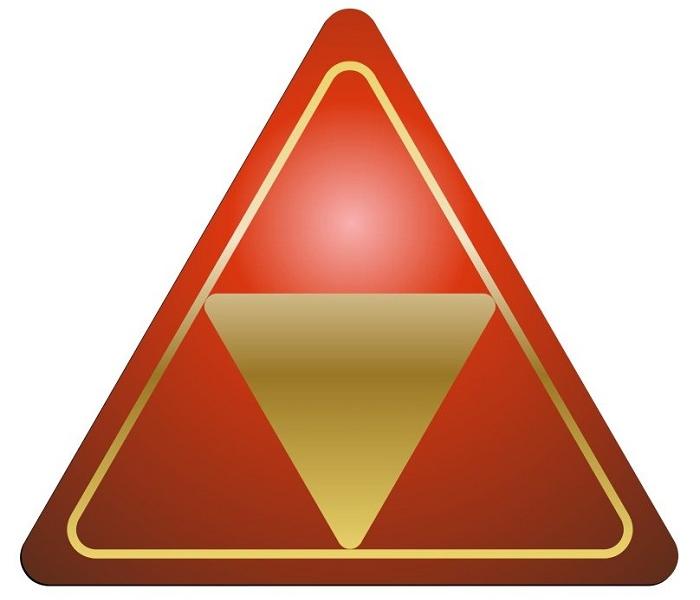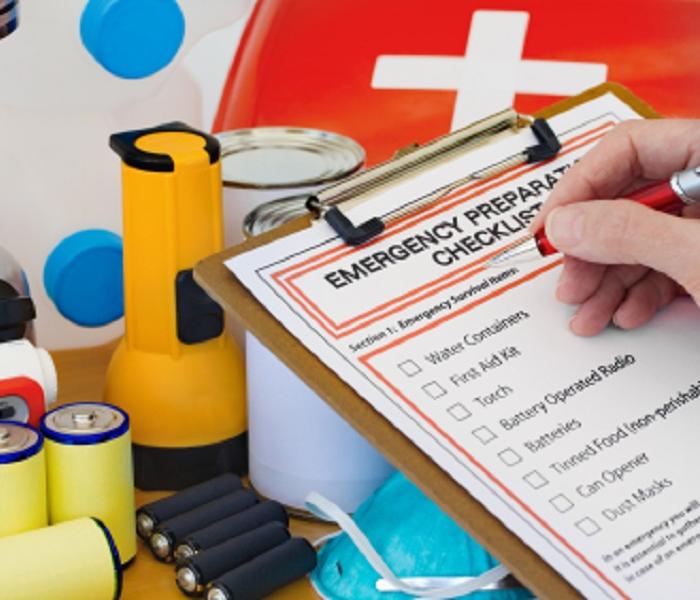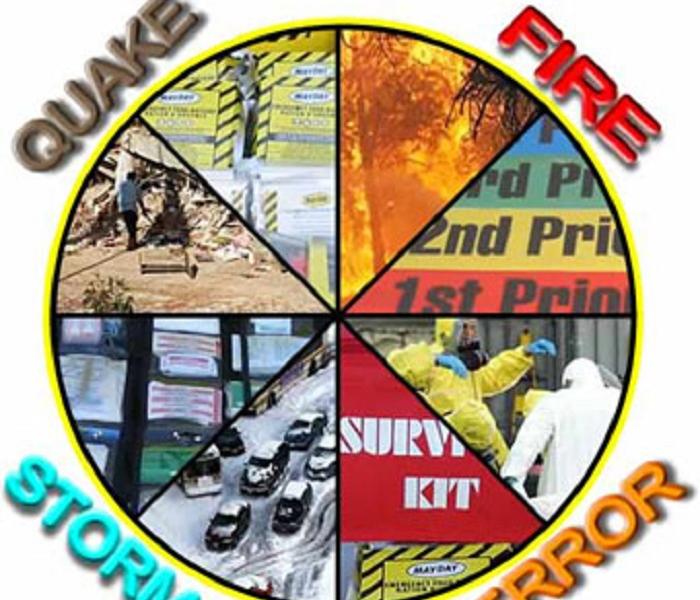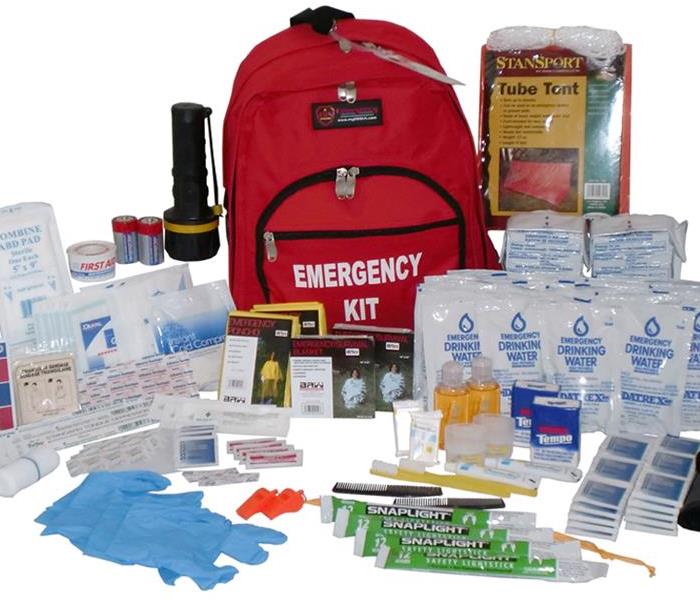Archived Community Blog Posts
TEAM LUZZI Helping Local Church Ministry
9/5/2023 (Permalink)
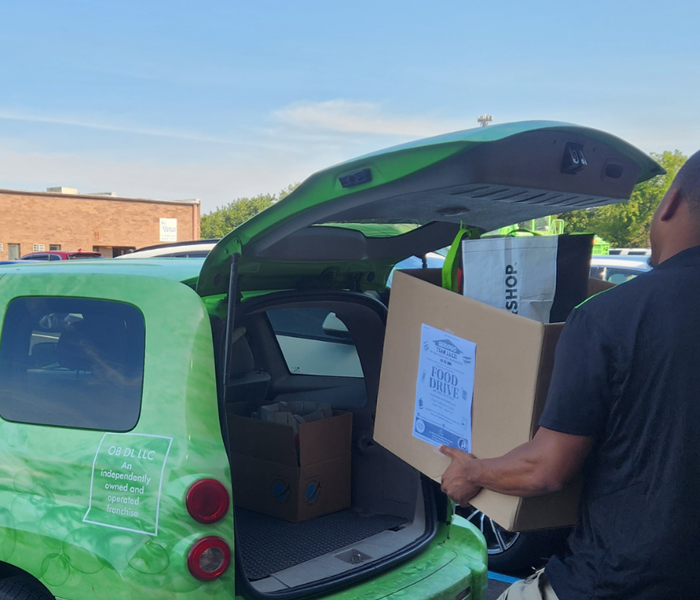 Loading the car up with all our donations
Loading the car up with all our donations
Our Team worked hard collecting donations for our local church pantry, which was in desperate need. Avery is on his way to deliver the donations to the ministry.
Our community means a lot to us. We are there to always lend a hand.
#teamluzzi #donate #localchurch #community #foodpantry
SERVPRO of Great Neck/Port Washington Runs Winter Series
3/17/2017 (Permalink)
 Heather Hamilton, Business Development
Heather Hamilton, Business Development
Our own Heather Hamilton of SERVPRO of Great Neck/Port Washington? ran the 2017 #LongIsland #WinterRunSeries - we are so proud!
#NaturalHeritageTrust NY State Parks & Historic Sites
WALK 97.5 K-98.3 103.1 MAX FM 94.3 The SHARK
1100 WHLI Runner's Edge New Living Magazine
#NewYorkStateParksRecreationandHistoricPreservation
#NYSParks #Run #Race #WinterSeries
SERVPRO of Great Neck/Port Washington Partners with LI's Habitat for Humanity
3/17/2017 (Permalink)
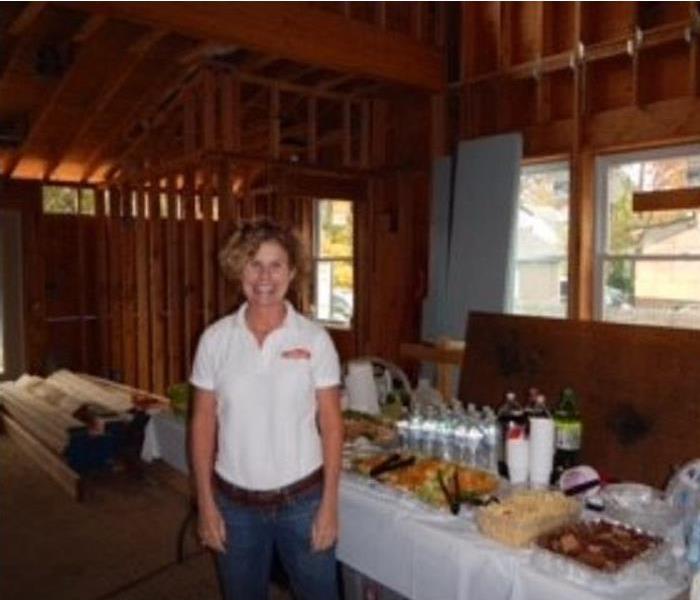 Heather Hamilton, Business Development
Heather Hamilton, Business Development
We were delighted to provide lunch recently to the hardworking volunteers at Habitat for Humanity - Nassau County! Brookies (Brownie-cookies), home cooked chili, a mountain of wraps and more to fortify them as they work on this home in Roosevelt, NY.
SERVPRO of Great Neck/Port Washington Feeds Habitat For Humanity Volunteers Again!
3/17/2017 (Permalink)
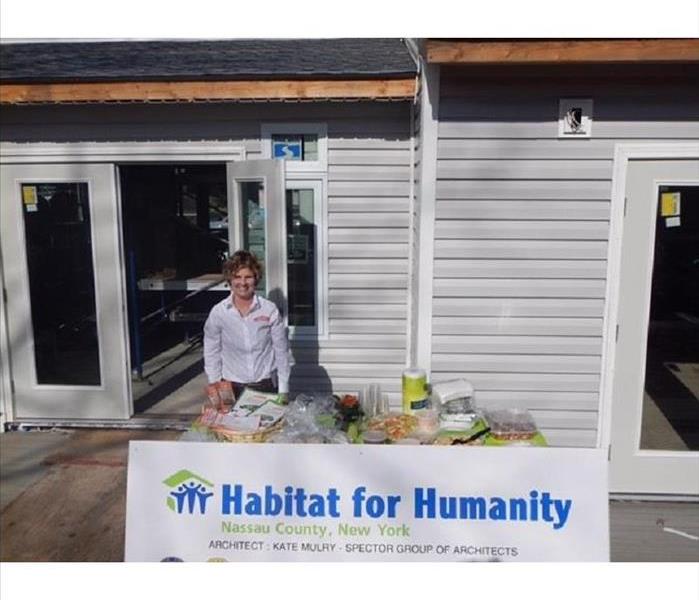 Heather Hamilton, Business Development
Heather Hamilton, Business Development
SERVPRO of Great Neck/Port Washington was delighted to be invited back provide a big lunch spread January 25th, 2017 to the hardworking volunteers at Habitat for Humanity - Nassau County!
The lunch was organized and orchestrated by SERVPRO's Heather Hamilton, who does the company's business development.
Brookies (brownie-cookies), home cooked soup, pasta salad, a mountain of mouth-watering wraps, fresh garden salad and more were the feast of the day for the hardworking group which includes recruiters from U.S. armed forces!
The home is located in Roosevelt, NY and is special: The house - unique to Habitat houses, is ALL GREEN - it is zero energy, and has solar power, so it will make as much energy as it uses and will reclaim all the water it uses to water the yard.
Thank you to Tom Baccarella- Director of Operations and Pavneet Kaur - Office Manager for Habitat of Humanity Nassau County, who we worked with on this event. SERVPRO of Great Neck/Port Washington is delighted to support Habitat for Humanity in their continued efforts to put people in homes.
Visit their Facebook page: https://www.facebook.com/HabitatNassau/ Habitat for Humanity - Nassau County and website http://www.habitatnassau.org/
#HabitatForHumanity #RooseveltNY #SERVPRO #Volunteer#NassauCounty #HabitatForHumanityNassauCounty #allgreen#zeroenergy #solarpower #solar #green #usbgc #construction
Habitat for Humanity
12/2/2016 (Permalink)
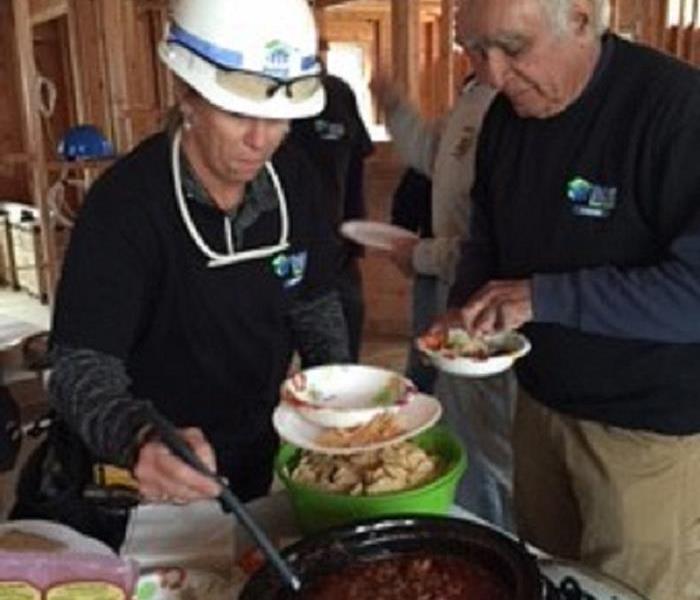 Lunch for Habitat Volunteers
Lunch for Habitat Volunteers
SERVPRO of Great Neck/Port Washington was delighted to provide a big lunch spread in November to the hardworking volunteers at Habitat for Humanity - Nassau County! Organized and orchestrated by SERVPRO's Heather Hamilton, brookies (brownie-cookies), home cooked chili, a mountain of mouth watering wraps and more were on hand to nourish and fortify these fine men and women as they work on this home in Roosevelt, NY.
We are happy to support Habitat for Humanity in their continuing efforts. They always need volunteers and lunch donation from companies, just like we did! You can learn more about the projects and needs on the Nassau County, Long Island, New York chapter's local website, http://www.habitatnassau.org/. Contact them today to see how you or your company can get involved.
SERVPRO of Great Neck/Port Washington Runs For the USMC & Warriors
11/15/2016 (Permalink)
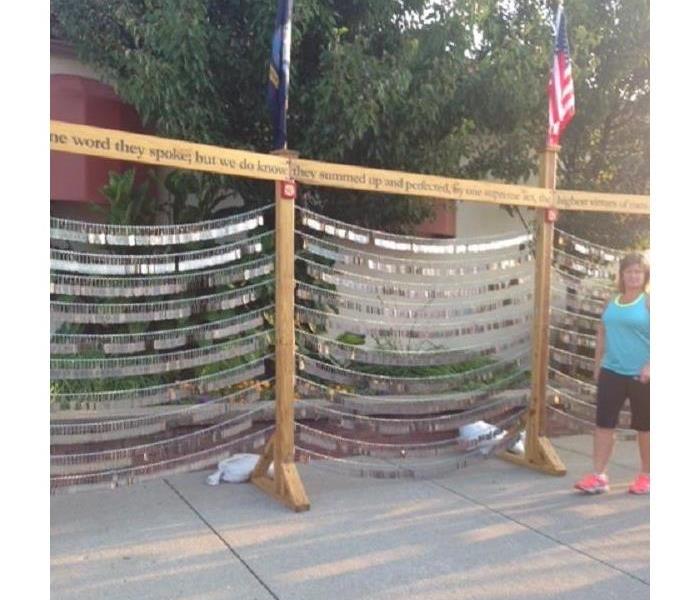 Dog Tags Swing in the Breeze at the 4 Mile Run
Dog Tags Swing in the Breeze at the 4 Mile Run
SERVPRO of Great Neck/Port Washington Business Development Manager recently ran the 4-mile Wounded Warrior event on Long Island, New York. Veteran's events are one of our favorites to participate in, as so many in our office have loved ones who are and were in the military protecting our country. The Joseph J. Boccia Run is organized by the USMC (United States Marine Corp) and is one in a series of runs designed to call attention to the plight of our Veterans and to raise funds to have a positive impact on their lives.
We look forward to more way that our office can volunteer and participate in causes that help our nation's Veteran population. It is very gratifying to give back to those that have protected our country.
SERVPRO of Great Neck/Port Washington Runs 10K for Warriors
11/15/2016 (Permalink)
 SERVPRO of Great Neck Supports the Cow Harbor Warrior Organization
SERVPRO of Great Neck Supports the Cow Harbor Warrior Organization
SERVPRO of Great Neck/Port Washington's Heather Hamilton ran for the Warriors recently, at the famous Cow Harbor 10K run starting in Northport, NY. We participate in many many Veterans causes as our way of giving back to the community. Heather herself is a highly accomplished runner and athlete so it was a natural fit. With parents who were both Veterans, the cause is close to Heather's heart as well. Raising awareness to the many needs of Long Island's Veterans is necessary to get the aid and legislation needed to properly care for them as the age. The Cow Harbor Warrior organization has donated over $235,000 to veteran organizations since it was launched in 2012. The organization says that "they focus to advance the wellbeing of injured veterans or veterans in need including: The Wounded Warriors Project, the Semper Fi Fund, Disabled American Veterans Transportation Network (DAV TN), Paws of War, the Northport VA Medical Center and others."
SERVPRO of Great Neck/Port Washington contributes to Pancreatic Cancer Research Walk
11/15/2016 (Permalink)
 Logo of the Lustgarten Foundation, organizer of the Pancreatic Cancer Research Walk
Logo of the Lustgarten Foundation, organizer of the Pancreatic Cancer Research Walk
SERVPRO of Great Neck/Port Washington raised $400 for the 2016 Long Island Pancreatic Cancer Research Walk in honor of a recently passed dear friend of one of our SERVPRO team members. Pancreatic cancer spreads silently and frighteningly swift - merely a few weeks after diagnosis, he was gone. We were set to walk in the event and had created a team, but the park cancelled it that morning due to high dangerous winds. We must find a cure so we were happy to be able to raise funds even if we were unable to walk this year. Our office does a lot of walks, runs, and Veterans cause based outreach - we touch our surrounding community with causes dear to our hearts and heavy on our minds.
SERVPRO of Great Neck/Port Washington helps Habitat for Humanity of Nassau County (LI, NY)
11/15/2016 (Permalink)
SERVPRO of Great Neck/Port Washington (Long Island, NY) was delighted to provide lunch Wednesday November 9th to the hardworking volunteers at Habitat for Humanity - Nassau County! Brookies (Brownie-cookies), home cooked chili, a mountain of wraps and more was brought to tables overflowing with delicious food to fortify and nourish them as they work hard on this home in Roosevelt, NY that will soon go to a deserving family. Habitat for Humanity is a wonderful volunteer group of people both in the construction field and those with no construction experience - who come together for the good of the community to provide wonderful homes to deserving families, Veterans and so forth. Our Business Development Manager, Heather Hamilton was on hand to set up and spend time with the hardworking volunteers!
Join TEAM SERVPRO of Great Neck/Port Washington for the “Out of the Darkness” Suicide Prevention Walk 10/23/16
8/25/2016 (Permalink)
 Out of The Darkness logo
Out of The Darkness logo
SERVPRO of Great Neck/Port Washington joins the community of nearly 250k people walking in hundreds of cities across the country, in support of the American Foundation for Suicide Prevention's (AFSP) mission to save lives and bring hope to those affected by suicide.
The Long Island "Out of the Darkness" Suicide Prevention Walk takes place in Wantagh, NY on Sunday, Oct. 23rd. Team SERVPRO of Great Neck/Port Washington has been formed, under team Captain, Heather Hamilton. The company invites the community to join the team and participate. Non-walkers can support the SERVPRO of Great Neck/Port Washington team with donations.
Team Captain, Heather Hamilton is also the Business Development Manager for SERVPRO of Great Neck/Port Washington. As an avid volunteer, she has worked with Mental Health Associations all over the country in an effort to raise awareness of the pro-activeness that is needed in order to save and rehabilitate lives. Many who join the team have friends or family that have been touched by suicide, and they walk in support and to raise awareness.
All donations are 100% tax deductible and will help bring AFSP one step closer to achieving their bold goal to reduce the suicide rate 20% by 2025. To register for the team or donate visit them on the AFSP website: http://tinyurl.com/TEAM-SERVPRO-GREAT-NECK To donate, choose any member of the team listed - all the participants’ donations raised goes toward our team goal.
SERVPRO of Great Neck/Port Washington is a national emergency restoration company specializing in Water, Fire and Mold for Commercial and Residential clients and cleaning for Sewage Backups, Smoke & Soot, Biohazard/Crime Scene, Post-Construction and Hoarding. SERVPRO’s excellent reputation makes them the most recommended emergency restoration company by the insurance industry for their services, on over 600 insurance carrier preferred lists. SERVPRO offers 24/7 emergency service, call 516-767-9600.
SERVPRO of Great Neck Port Washington - Proud Sponsor of the 2015 LIREG Cast Iron Chefs Event!
2/13/2015 (Permalink)
https://www.facebook.com/media/set/?set=a.939409876078789.1073741853.579489118737535&type=3&uploaded=88
SERVPRO® celebrates 6th Consecutive Year on Entrepreneur’s Top 10 Franchise List
1/15/2015 (Permalink)
Cleanup and restoration franchiser stands strong in the #7 position in the 2015 Franchise 500 ranking
SERVPRO®, a cleanup and restoration franchise company, maintains its hold on the No.7 spot overall – out of a group of 927 franchises that qualified for inclusion in the list – in the recently announced 2015 Franchise 500 rankings* from Entrepreneur magazine.
This recognition marks the 12th consecutive year SERVPRO has earned a spot on the magazine’s list in its own industry – Restoration Services.
Entrepreneur magazine’s Franchise 500 selection process** uses “objective, quantifiable measures of a franchise operation” to help would-be entrepreneurs identify franchise investment opportunities. Some of the important factors considered by Entrepreneur in developing the list each year are “financial strength and stability, growth rate and size of the system.”
SERVPRO of Great Neck Port Washington specializes in fire and water cleanup and restoration services, helping both commerical and residential customers recover from property damage emergencies and represents the ongoing brand leadership for restoration services in Great Neck/Port Washington/Roslyn and surrounding communities.
For more information about SERVPRO of Great Neck Port Washington, visit our website www.SERVPROofgreatneck.com or contact us 24/7 at 516-767-9600.
About SERVPRO®
Founded in 1967, the SERVPRO® Franchise System is a national leader and provider of fire and water cleanup and restoration services and mold mitigation and remediation. SERVPRO’s professional services network of nearly 1,700 individually owned and operated Franchises responds to property damage emergencies ranging from small individual disasters to multi-million dollar losses. Providing coverage in the United States and Canada, the SERVPRO System has established relationships with major insurance companies and commercial clients, as well as individual homeowners.
*http://www.entrepreneur.com/franchise500/index.html
**http://www.entrepreneur.com/franchises/franchise500/about.html
Happy New Year!
12/31/2014 (Permalink)
Best Wishes from Your Friends at SERVPRO of Great Neck Port Washington!
SERVPRO Industries makes Entrepreneur Magazine's Top 10 Franchises of 2015!
12/17/2014 (Permalink)
SERVPRO of Great Neck Port Washington says thank you to those of you who call on us in times of need and helped to make SERVPRO Industries the #7 Ranked Franchise in the country!
Please visit www.entrepreneur.com at the link below to read all about us!
http://entm.ag/1wFPHSY
Best Wishes To You This Thanksgiving Day
11/24/2014 (Permalink)
"Thanksgiving, after all, is a word of action."
Wishing You and Your Family a Harvest of Good Times on this
Special Day.
Freedom Is Never Free - Thank You to Our Veterans
11/11/2014 (Permalink)
"Patriotism is easy to understand in America - it means looking out for yourself by looking out for your country." - Calvin Coolidge
Proud To Share Our 2nd Testimonial From Nat Grid!
9/22/2014 (Permalink)
September 19, 2014
Dear Debbie,
After some years, I would like to take the time out to Thank You and your Team.
I cannot tell you enough how happy with are with your Service. Dan and his staff have constantly impressed us with this cooperation, professionalism and quality of work on every project we have given you.
In addition to the quality, the timeliness and customer service has always been outstanding. I get nothing but wondrous compliments and positive reviews from our employees who have first hand interaction with your team.
Thank You for your commitment, reliability and fine work. We look forward to working together with SERVPRO of Great Neck / Port Washington for years to come.
Keep up the good work and thanks again for all your efforts.
nationalgrid
Facilities Management
Hicksville, NY
SERVPRO Great Neck / Port Washington - The Value of an ERP (Testimonial)
9/19/2014 (Permalink)
September 15, 2014
Thank you for taking the time to pull together an Emergency Profile for each of our buildings in the East Williston School District. I think it was a worthy project and I look forward to keeping it updated each year.
As I mentioned, one of our custodians has been in his building for 25 years. When he plans his retirement, I can rest easy that I have the information that I need to train the new custodian without having to stress. This is a smart feature that I will bring to the attention of my peers when we meet.
I also appreciated reviewing my emergency information with you as I could see that there was some information that was not as up to date as I would like. I like the fact that you will revisit this review with me on a yearly basis. I think it is a good idea.
The fact that I have all of this available to me from my phone and computer is fantastic. Like you said, I can't imagine how I will use it, but in the right circumstances, it can be a game changer. What I still marvel at is that it's free!
Thanks again and I will do my best to share this information with other Directors who have not yet taken advantage of this program. It truly is a no-brainer.
Sincerely, Nicholas W. Fusco Director of Facilities & Operations East Williston School District
Be Ready, National Preparedness Month is Here! Series Final - Maintain a Healthy State of Mind
9/12/2014 (Permalink)
September 2014 marks the eleventh annual National Preparedness Month, sponsored by the Federal Emergency Management Agency in the US Department of Homeland Security. One goal of Homeland Security is to educate the public about how to prepare for emergencies, including natural disasters, mass casualties, biological and chemical threats, radiation emergencies, and terrorist attacks.
Everyone has their own ways of dealing with stressful situations. Resilience—the ability to adapt well to life's ups and downs—can help manage stress and feelings of anxiety. Everyone can develop resilience. It involves thoughts and actions that can be learned and practiced over time.
Anyone who experiences a disaster is affected by it, whether directly or indirectly through location, family or friends, or exposure to media coverage of the event.
Even if a disaster, such as a terrorist act, produces little physical damage, it can bring fear, confusion, and uncertainty into daily life. Strong and varied emotional reactions to such an event are natural. People are resilient and able to recover from difficult experiences.
Given the uncontrollable nature of disasters, some people question whether they can take steps to plan for catastrophic events. Actually, we know that the more people prepare for the unexpected, the better they manage these situations.
Be Ready, National Preparedness Month is Here! Series - Part 4 - Understand Quarantine and Isolation
9/11/2014 (Permalink)
September 2014 marks the eleventh annual National Preparedness Month, sponsored by the Federal Emergency Management Agency in the US Department of Homeland Security. One goal of Homeland Security is to educate the public about how to prepare for emergencies, including natural disasters, mass casualties, biological and chemical threats, radiation emergencies, and terrorist attacks.
People can be infected with dangerous diseases in a number of ways. Some germs, like those causing malaria, are passed to humans by animals. Other germs, like those that cause botulism, are carried to people by contaminated food or water. Still others, like the ones causing measles, are passed directly from person to person. These diseases are called "contagious".
Contagious diseases that pose a health risk to people have always existed. While the spread of many of these diseases has been controlled through vaccination and other public health efforts, avian influenza ("bird flu") and terrorist acts worldwide have raised concerns about the possibility of a disease risk. That makes it important for people to understand what can and would be done to protect the public from the spread of dangerous contagious diseases.
The CDC applies the term "quarantine" to more than just people. It also refers to any situation in which a building, conveyance, cargo, or animal might be thought to have been exposed to a dangerous contagious disease agent and is closed off or kept apart from others to prevent disease spread.
The Centers for Disease Control and Prevention (CDC) is the U.S. government agency responsible for identifying, tracking, and controlling the spread of disease. With the help of the CDC, state and local health departments have created emergency preparedness and response plans. In addition to early detection, rapid diagnosis, and treatment with antibiotics or antivirals, these plans use two main traditional strategies —quarantine and isolation— to contain the spread of illness. These are common health care practices to control the spread of a contagious disease by limiting people's exposure to it.
The difference between quarantine and isolation can be summed up like this:
Isolation applies to persons who are known to be ill with a contagious disease.
Quarantine applies to those who have been exposed to a contagious disease but who may or may not become ill.
Definitions
Infectious disease: a disease caused by a microorganism and therefore potentially infinitely transferable to new individuals. May or may not be communicable. Example of non-communicable is disease caused by toxins from food poisoning or infection caused by toxins in the environment, such as tetanus.
Communicable disease: an infectious disease that is contagious and which can be transmitted from one source to another by infectious bacteria or viral organisms.
Contagious disease: a very communicable disease capable of spreading rapidly from one person to another by contact or close proximity.
Be Ready,National Preparedness Month is Here! Series Part 3 - Learn to Shelter in Place
9/10/2014 (Permalink)
September 2014 marks the eleventh annual National Preparedness Month, sponsored by the Federal Emergency Management Agency in the US Department of Homeland Security. One goal of Homeland Security is to educate the public about how to prepare for emergencies, including natural disasters, mass casualties, biological and chemical threats, radiation emergencies, and terrorist attacks.
#3 Learn How to Shelter in Place
"Shelter-in-place" means to take immediate shelter where you are—at home, work, school, or in between. It may also mean "seal the room;" in other words, take steps to prevent outside air from coming in. This is because local authorities may instruct you to "shelter-in-place" if chemical or radiological contaminants are released into the environment. It is important to listen to TV or radio to understand whether the authorities wish you to merely remain indoors or to take additional steps to protect yourself and your family.
How do I prepare?
At home
Choose a room in advance for your shelter. The best room is one with as few windows and doors as possible. A large room, preferably with a water supply, is desirable—something like a master bedroom that is connected to a bathroom.
Contact your workplaces, your children's schools, nursing homes where you may have family and your local town or city officials to find out what their plans are for "shelter-in-place."
Find out when warning systems will be tested. When tested in your area, determine whether you can hear or see sirens and/or warning lights from your home.
Develop your own family emergency plan so that every family member knows what to do. Practice it regularly.
Assemble a disaster supplies kit that includes emergency water and food supplies.
At work
Help ensure that the emergency plan and checklist involves all employees. Volunteers or recruits should be assigned specific duties during an emergency. Alternates should be assigned to each duty.
The shelter kit should be checked on a regular basis. Duct tape and first aid supplies can sometimes disappear when all employees know where the shelter kit is stored. Batteries for the radio and flashlight should be replaced regularly.
In general
Learn CPR, first aid and the use of an automated external defibrillator (AED). (Contact your local American Red Cross chapter for more information.)
How will I know when I need to "shelter-in-place"?
Fire or police department warning procedures could include:
"All-Call" telephoning - an automated system for sending recorded messages, sometimes called "reverse 9-1-1".
Emergency Alert System (EAS) broadcasts on the radio or television.
Outdoor warning sirens or horns.
News media sources - radio, television and cable.
NOAA Weather Radio alerts.
Residential route alerting - messages announced to neighborhoods from vehicles equipped with public address systems.
Facilities that handle potentially dangerous materials, like nuclear power plants, are required to install sirens and other warning systems (flash warning lights) to cover a 10-mile area around the plant
Be Ready, National Preparedness Month is Here! Series Part 2 - Gather Emergency Supplies
9/9/2014 (Permalink)
September 2014 marks the eleventh annual National Preparedness Month, sponsored by the Federal Emergency Management Agency in the US Department of Homeland Security. One goal of Homeland Security is to educate the public about how to prepare for emergencies, including natural disasters, mass casualties, biological and chemical threats, radiation emergencies, and terrorist attacks.
If a disaster strikes your community, you might not have access to food, water, or electricity for some time. Take steps now to put together an emergency supply kit so that you will be prepared in case something happens. You should have emergency kits for your home, office, school, and vehicle. You never know where you will be during an emergency.
Emergency Supply Kit
TIPS
- Consider storing two weeks worth of food supplies. You may be able to use many of the canned goods and dry mixes already in your cupboard.
- Store at least a 3-day supply of water for each member of your family – that means 1 gallon per person per day.
- Don’t forget about pets; they’ll need food and water too.
- Learn where your gas, electric, and water shut-off locations are and how to turn them off.
An emergency supply kit is a collection of basic items that you might need during an emergency. It's good to involve whoever is going to use the kit, including children, in assembling it.
Assemble the following items to create kits to use at your home, office, and school and/or in a vehicle:
- Water—one gallon per person, per day
- Food—nonperishable, easy-to-prepare items
- Flashlight
- Battery powered or hand crank radio (NOAA Weather Radio, if possible)
- Extra batteries
- First aid kit
- Medications (7-day supply), other medical supplies, and medical paperwork (e.g., medication list and pertinent medical information)
- Multipurpose tool (e.g., Swiss army knife)
- Sanitation and personal hygiene items
- Copies of personal documents (e.g., proof of address, deed/lease to home, passports, birth certificates, and insurance policies)
- Cell phone with chargers
- Family and emergency contact information
- Extra cash
- Emergency blanket
- Map(s) of the area
- Extra set of car keys and house keys
- Manual can opener
Special Needs
You may need some additional supplies to meet the needs of all family members, such as children, pets, and those with special medical requirements. Suggested items to help meet additional needs are:
- Medical supplies (e.g., hearing aids with extra batteries, glasses, contact lenses, syringes, or a cane)
- Baby supplies (e.g., bottles, formula, baby food, and diapers)
- Games and activities for children
- Pet supplies (see expanded list below)
Once you’ve gathered your supplies, pack the items in easy-to-carry containers, clearly label the containers, and store them where they are easily accessible. In a disaster situation, you may need access to your emergency supply kit quickly - whether you are sheltering at home or evacuating. Make sure to check expiration dates on food, water, and batteries throughout the year.
Involving Children
Involving children is the first step in helping them know what to do in an emergency. There are many ways children can help.
- Ask them to think of items that they would like to include in an emergency supply kit, such as books or games or nonperishable food items. Ask them to help you remember to keep the kits updated.
- Children can help mark the dates on a calendar for checking emergency supplies. Remember to rotate or replace emergency food and water every six months and replace batteries as necessary.
- Children can also help prepare plans and disaster kits for family pets.
Disaster Supply Checklist for Pets
- Food and water for at least 3 days for each pet; bowls, and a manual can opener.
- Depending on the pet you may need a litter box, paper towels, plastic trash bags, grooming items, and/or household bleach.
- Medications and medical records stored in a waterproof container.
- First aid kit with a pet first aid book.
- Sturdy leash, harness, and carrier to transport pet safely. A carrier should be large enough for the animal to stand comfortably, turn around, and lie down. Your pet may have to stay in the carrier for several hours.
- Pet toys and the pet's bed, if you can easily take it, to reduce stress.
- Current photos and descriptions of your pets to help others identify them in case you and your pets become separated, and to prove that they are yours.
- Information on feeding schedules, medical conditions, behavior problems, and the name and telephone number of your veterinarian in case you have to board your pets or place them in foster care.
Be Ready, National Preparedness Month is Here! Series - Part 1 - Developing a Family Disaster Plan
9/8/2014 (Permalink)
Would you be ready if there were an emergency? Throughout September there will be activities across the country to promote emergency preparedness. More than 3,000 organizations – national, regional, and local public and private organizations – are supporting emergency preparedness efforts and encouraging all Americans to take action.
September 2014 marks the eleventh annual National Preparedness Month, sponsored by the Federal Emergency Management Agency in the US Department of Homeland Security. One goal of Homeland Security is to educate the public about how to prepare for emergencies, including natural disasters, mass casualties, biological and chemical threats, radiation emergencies, and terrorist attacks.
Developing a Family Disaster Plan
Families can cope with disasters by preparing in advance and working together as a team. If something were to happen, how would you contact one another, how would you get to a safe place, and what would you do in different emergency situations? Planning what to do before a disaster strikes provides the best protection for you and your family.
Create a Family Communication Plan
Because you and your family may not be together when a disaster hits, it’s important to create a communication plan to help you and your loved ones connect and get help. Complete a contact card for each family member. Have them keep these cards handy in a wallet, purse, or backpack.
More Tips:
- Identify an out-of-town contact, such as a friend or relative, who family members can call to let them know they are safe. It may be easier to make a long-distance phone call than to call across town, because phone lines can be jammed. An out-of-town contact may be in a better position to communicate among separated family members.
- Teach your family members how to text. It may seem like second nature to some of us, but not everyone texts. During an emergency it’s often easier to get a text message delivered rather than a phone call.
- Subscribe to an Emergency Alert System. Check with your local health department or Emergency Management Agency to see if there is one offered for your area. Post emergency telephone numbers by home phones or save them in your cell phone (fire, police, ambulance, etc.).
- Teach children how and when to call 911 for help.
SERVPRO of Great Neck / Port Washington - TOP TEN Volume Leader!
9/2/2014 (Permalink)
The Results Are In!
Thank you for making SERVPRO of Great Neck / Port Washington a TOP TEN Volume Leader Franchise (July 2014) for the Southern New England and New York Region!
SERVPRO of Great Neck / Port Washington to Present at the Bryant Library in Roslyn New York
8/25/2014 (Permalink)
Deborah Rashti, VP of Sales and Marketing with SERVPRO of Great Neck/Port Washington on Wednesday evening, September 10, 7:30pm at the Bryant Library in Roslyn Village, will present Emergency Planning is Key to a Quick Recovery.
Do you have all your emergency contact information at your fingertips if you require assistance of any kind? Do you have a back up to your computer in the event that your data is compromised? Are you paying lower insurance premiums only to learn that your coverage is inadequate in the face of a major disaster? Between the looming terrorist threats we face as New Yorkers; the active threat of national and international cyber theft; the massive clean-up required from extreme weather as we saw with Sandy; or the real risk we all face in lieu of fire and flooding statistical evidence - this seminar is an excellent resource of information.
Deborah Rashti, has over 7 years of experience on the restoration side of the Disaster Recovery Business with an impressive list of clients. Having prepared over 70 profiles for many companies, schools and libraries, she has become an expert in the field of emergency preparedness with regard to property damage.
As electronic data is key to retrieving emergency information and insurance coverage paramount to getting back to the business of setting up your home or office, Ms. Rashti will be joined by 3rd generation insurance professional and Roslyn resident, Richard Levine, President of MRL Insurance, a 60 year old family business in Great Neck, to discuss the property insurance side of this spectrum. Special thanks to contributor and Roslyn Chamber of Commerce member Harun Hassouni, President and owner of CMIT Solutions of North Nassau in Roslyn, specializing in disaster recovery planning, business continuity and archiving solutions for small and medium businesses.
Refreshments will be served and there will be ample time for speakers to take questions from the audience.
For more information about SERVPRO® of Great Neck/Port Washington, please contact (516) 767-9600 or visit www.servproofgreatneck.com.
About SERVPRO®
Founded in 1967, the SERVPRO® Franchise System is a national leader and provider of fire and water cleanup and restoration services and mold mitigation and remediation. SERVPRO’s professional services network of more than 1,600 individually owned and operated Franchises responds to property damage emergencies ranging from small individual disasters to multi-million dollar large-loss events. Providing coverage in the United States and Canada, the SERVPRO®System has established relationships with major insurance companies and commercial clients, as well as individual homeowners.
SERPVRO of Great Neck / Port Washington: Another Satisfied Customer!
6/9/2014 (Permalink)
Delux Transportation Services, Port Washington, NY
Being a company that operates 24/7 is a challenge in itself. However, when disasters strike, they present an entirely new challenge to continue to provide the highest level of customer service while at the same time trying to recover from such disasters. Thanks to SERVPRO we were able to do just that.
We called SERVPRO after a major fire broke out in the building across from our location. Our office was full of residue from the ash and smoke. Since our office is constantly in use we needed the job done quickly and efficiently to regain a safe and healthy environment for both our employees and our clients.
The quality of service we received was outstanding and we were more than pleased with the services they provided. The SERVPRO team that came was incredibly efficient. Over the course of just a weekend our office was spotless, without any lingering odor or residue to be found. Both employees and clients alike were amazed at how quickly and thoroughly we were able to recover from the fire.
SERVPRO has an excellent cleaning staff, very attentive to details, honest, dependable and very affordable.
SERVPRO of Great Neck/Port Washington - without a question is the best disaster recovery service in Nassau County.
We are very grateful to the entire staff at SERVPRO and although we do not wish any more disasters to arise, we at Delux feel comforted to know that we have a great company like SERVPRO to help us recover.
Andreas Majer, Executive VP
SERVPRO of Great Neck Port Washington's First Local Government Testimonial!
5/29/2014 (Permalink)
April 2014
To Whom It May Concern,
Our Village had a residential hoarding issue that posed a serious threat to the safety of neighboring residents. The homeowner was elderly and unable to correct the situation due to a lack of resources.
SERVPRO of Great Neck/Port Washington was called in for an estimate, and due to Dave Smollett's vast experience with municipalities, they were able to present a solution that would allow the Village to cover the expense of this clean up via a tax lien that would guarantee our reimbursement when the home is eventually put up for sale.
SERVPRO of Great Neck /Port Washington ws able to secure the bid and they were able to commence immediately. Despite the huge amount of debris that come from his home (6 -30 yard dumpsters), these professionals were able to get the job done within a matter of days.
SERVPRO was not just efficient in their clean up, and creative with a viable solution that made it a win-win for all parties, but they gave this lifelong resident a way to stay in her home for the remainder of her life with dignity.
Sincerely,
Brian Harty, Village Administrator
Village of Farmingdale, New York
How to Save Before a Big Storm
3/7/2014 (Permalink)
(Reprinted from US News)
By Laura Harder
Remember the tale of the ant and the grasshopper from Aesop's Fables? The wise ant stored up food during the warmer months in preparation for winter, while the lazy grasshopper would only sing in the summer and found himself starving and begging for food come winter. Although the predictable change of seasons may not cause you personally to break the bank -- unless it's the holiday season -- unexpected and severe weather emergencies can quickly leave you in a financial rut.
This week happens to be National Severe Weather Preparedness Week. Although severe winter storms and extreme cold may be what readily comes to mind near the end of a long winter, other hazardous weather such as thunderstorms, lightning, floods, hurricanes, tornadoes, extreme heat and drought are also included.
The National Oceanic and Atmospheric Administration and Federal Emergency Management Agency stress the importance of preparing for severe weather before it strikes. As a frugal shopper, the same strategy applies. Since controlling the weather isn't possible, focus on what you can control: your preparation and finances.
Here are some simple tips to help you save money:
1. Look into tax-free incentives.
Find out if your state has any tax-free holidays for emergency supplies and equipment.
States such as Alabama, Louisiana, and Virginia have severe weather, hurricane or emergency preparedness tax-free weekends. Visit your state's tax department website to see if there are any tax incentives offered in your area, as well as eligible items, which may include portable generators, batteries, cell phone batteries, fire extinguishers, flashlights, duct tape, first aid kits and more. Be aware that qualifying items vary by state and there may be price limits in place.
2. Stockpile non-perishables.
Be sure to stock up your pantry with non-perishables by taking advantage of coupons and store promotions. Make sure you buy enough extra items to avoid the need to buy that item at full price before the next sale comes around. Using this strategy can help you gradually grow your emergency stockpile.
3. Save on water.
Don't want to spend an arm and a leg on bottled water? Simply drink tap water. Studies have shown that tap water may actually have more health benefits than bottled water, contrary to public opinion. To store tap water in preparation for an emergency, use plastic juice containers after cleaning them.
If you still prefer to buy bottled water at the store, wait for sales and promotions on the big name brands and use manufacturer coupons. A different strategy is to simply go for the generic, store-brand water, which can save you a bundle compared to the expensive name-brand at full price. Be sure to compare the unit price among the different water products and packaging. You'll typically save more by buying a gallon of water than a pack of bottled waters.
4. Beat the mad dash to the store.
Be sure to hit the grocery store before the masses. Once you catch wind about even the possibility of severe weather in the news, I recommend getting to the store quickly to grab any supplies that you direly need. You'll have more selection and a better chance of purchasing the least expensive option or brand before the shelves are bare. Do this as early as possible. If you find yourself without much lead time, only go out to the store if you have adequate time and there is not an immediate threat. In other words, don't drive out in the middle of a bad storm or leave your house during a tornado to grab a loaf of bread.
5. Build an emergency kit.
Instead of buying an expensive, pre-assembled emergency kit, create your own by shopping for supplies you'd need in the event of a disaster. At the top of your list is water, at least one gallon of water per person per day, for both drinking and sanitation, as well as a minimum three-day supply of non-perishable food, including canned goods and shelf stable foods.
Make sure you have a flashlight, extra batteries, a first aid kit, moist towelettes, garbage bags, battery-powered or a hand crank radio and other essential items your family will need in the case of an emergency. You can find a complete list of recommended supplies that should be included in a basic disaster supplies kit on ready.gov.
As one of my friends likes to say, "Proper planning prevents poor performance." This applies so well to emergencies and severe weather. To summarize: Have a plan, be the "ant" that stores up for the winter and unexpected storms and save money along the way.
SERVPRO of Great Neck Port Washington asks: It's National Severe Weather Preparedness Week. Are you ready for an emergency?
3/7/2014 (Permalink)
(Reprinted)
By Emily Clark, Safety Editor BLR
March 2-8, 2014, is National Severe Weather Preparedness Week, and OSHA has teamed up with the National Oceanic and Atmospheric Administration (NOAA) to address the hazards that severe weather poses for workers and employees. Is your company prepared for a weather emergency? Keep reading to find out.
To minimize the danger to workers, OSHA and NOAA encourage employers to take the following steps:
•Stay aware of weather forecasts.
•Train workers on workplace severe weather plans.
•Keep emergency supplies, including a battery-operated weather radio, on hand.
•Ensure that workers involved in response and recovery are protected from potential safety and health hazards.
According to NOAA, in 2013, there were seven weather and climate disaster events, resulting in 109 deaths and causing losses exceeding $1 billion per event across the United States. In May 2013 alone, 267 tornadoes occurred across 25 states, including the EF5 tornado that struck Moore, Oklahoma, and caused an estimated $2 billion in property damage.
6 essential emergency preparedness tips
1. Develop an emergency plan and communicate it to your employees. It should include escape procedures and escape route assignments, special procedures for employees who perform or shut down critical plant operations, systems to communicate with and account for all employees after evacuation, rescue and medical duties for employees who perform them, and means for reporting emergencies.
Note that many OSHA standards require employers to develop written emergency action plans (EAPs). If your business is affected by one of these requirements, this article gives you eight tips to help you get started.
2. Designate an emergency response coordinator and a backup coordinator who will be responsible for determining what emergencies may occur and seeking that emergency procedures are developed to address each situation, directing all emergency activities, ensuring that outside emergency services are notified when necessary, and directing the shutdown of company operations when necessary.
3. Form an emergency response team with members who will be trained to use fire extinguishers, administer first aid, follow OSHA’s bloodborne pathogens standard, shut down company operations, control chemical spills, perform search and emergency rescue procedures, and respond to emergencies involving hazardous materials, depending on the specifics of your company’s operations.
4. Keep a copy of important records and files at an off-site, secure location in case original copies are damaged or destroyed. Online cloud storage services may be a good option for some businesses, as these services should not be affected by local weather conditions in your area.
5. Have a disaster supply kit with food, water, and other essentials at your company’s facilities for situations where employees must shelter in place either because travel is unsafe or because they are responsible for maintaining critical operations during an emergency closure. The Federal Emergency Management Administration (FEMA) has a list of what to include in a disaster supply kit at http://ow.ly/ueLF5.
6. Train employees on the details of your emergency plan, including evacuation procedures, alarm systems, shutdown procedures, reporting procedures for personnel, and types of potential emergencies. Also make sure to train employees on any hazards specific to your facility, such as toxic chemicals, fire hazards, and any equipment that may become hazardous in the event of a power failure or other emergency.
Additional information on Severe Weather Preparedness Week is available from OSHA at http://ow.ly/ueIEP and NOAA at http://ow.ly/ueIyp.
For more information on emergency preparedness, see BLR’s Disaster Planning and Response resource center.
SERVPRO of Great Neck Port Washington Provides Preventive Planning Tips to Community
2/27/2014 (Permalink)
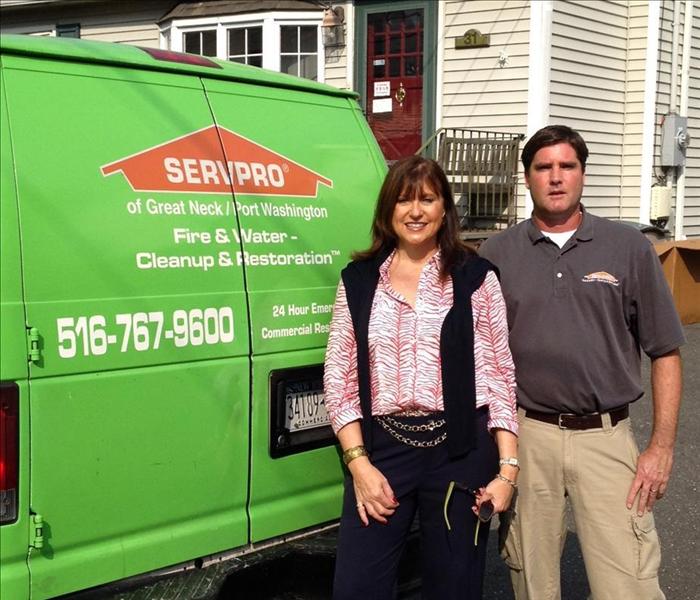 Sandy "veterans": SERVPRO of GNPW Vice President of Marketing Deborah Rashti (l) with Danny Wallace, owner.
Sandy "veterans": SERVPRO of GNPW Vice President of Marketing Deborah Rashti (l) with Danny Wallace, owner.
Below is a reprint of an article which appeared in
The Weekend, November 2013
HURRICANE SANDY: ONE YEAR LATER
Preventative Planning Before Emergencies Arise
By Andy Newman
Deborah Rashti saw far too many instances of extreme devastation, heartbreak and loss caused by Superstorm Sandy last year in her role as vice president for SERVPRO of Great Neck/Port Washington, a company that specializes in storm, flood and disaster restoration, she has several suggestions to help lessen the effects of any future serious weather events.
“Advance planning is key to how you will fare after a disaster,” she said. “Consider taking steps today, before an emergency arises.”
Rashti emphasizes that having a properly assembled “go bag” is prime in importance. “Pick up a blank CD and scan your key documents,” she urged. “Unfortunately today, we’re required to identify who we are, where we live and what we own.”
Help on scanning documents is available, usually at local libraries and insurance offices. She suggested, “You want to scan any document that helps identify who you are, where you live and what you own. Your marriage certificate, your birth certificate, your social security card and any titles to anything that you own whether it’s a car, a motorcycle, a house or a boat are important.”
“Any bank account/checking account numbers and credit card numbers that you have should also be scanned,” she added. “If your house was badly damaged, the Red Cross would come into your community with trucks and these trucks would be equipped with computers that could read that disk. With this information available the Red Cross would then be able to expedite services that they could give you.”
Store the disk in a very safe place. The Servpro executive continued, “Make sure you know where you’re storing it in your house. Store it on a high level in your home. Make extra copies of the disk and put one in a safe deposit box. Remember where you’re storing it because should you need to leave your house immediately, you need to take it with you.” Homeowners should also be sure to seek advice on encrypting the disk’s contents to enhance the security of its information.
There are several suggested lists of essential items to include in a “go bag” and Rashti advises referring to the Red Cross website (www.redcross.org) as a start. “You should have some kind of antibiotic cream packed,” she said, “because you cannot anticipate what kind of hazards you could face outside. You need to have it because the hospitals will be deluged during a crisis and you want to be as independent as possible.
“So you want to have some sort of first aid kit and some heavy gloves, too,” she explained, “because if you need to avoid debris you need to be able to push it away from you without exposing yourself to injury. If you take medication, make plans to have an extra month’s supply on hand. Drugs may not be readily available. As for warm socks and a change of clothing, it doesn’t have to be any special kind. But if you need to go, you need to know that it’s sitting there and waiting.”
Rashti’s own “go bag” contains cans of tuna fish and peanut butter. “Pack food products that are not going to go bad and some water bottles that you can take with you,” she says. “The same thing applies if you have a pet.”
As for her next tip, Rashti said, “I suggested to many people, even before Sandy and Katrina, that you throw a lot of loose change and singles, fives, tens into the bag. You want to be able to go into stores to buy food and, as happened during Sandy, they don’t have a way of making change for you. Some people wound up paying $20.00 for a bagel and coffee because all they had were twenties from the ATM cash machines.
“You really have to think ahead,” she added, switching her focus to long range planning. “You have to have a good relationship with your insurance company or agent. It’s critical. You need a broker who really explains to you what you’re paying for and what that coverage is. I can’t tell you how many people were stunned to find out that they didn’t have coverage that they thought they had. Everyone is usually concerned with paying the least amount for their insurance but when things happen they realize that it’s a very foolish way to look at it.
“Things tend to happen when we’re not home, or at times when there’s no one who can help us,” Rashti cautioned. “It’s always smart to make sure that there’s somebody else (a neighbor, a friend, a relative) who has a key to the house and who definitely checks on the house every once in a while because we get phone calls from neighbors sometimes that there’s a flood in the basement but we can’t get in. As an owner you’re not always going to be at home. The insurance company is not going to cover you if they find that the problem wasn’t taken care of as soon as possible.”
Whether you think our weather patterns are changing for the worse or there just seem to be more and more serious weather events, Rashti agrees that events are frequent. “When you watch the weather station use realize that there’s something going on almost every day,” she pointed out. “Look at the Midwest – tornado alley? This is happening to them all the time. Look at our neighbors in Colorado. Don’t forget what happened with that fertilizer factory in Texas.
“When I joined SERVPRO six years ago we had only 10 branches on Long Island. Now we have 20. We had 1,400 around the country. Now we have 1,600. So you have to question how come a company that only deals in disasters could be growing so fast.”
Despite an increased number of mircobursts, windstorms, hailstorms and tornadoes in this area, Rashti feels that Long Islanders have been relatively lucky. “Until Sandy came along, she said, “we never remember anything like it happening. Some people recall the Level 3 hurricane storm of 1938, but everything east of Glen Cove Road at that time was basically farmland. Any hurricane now that is more than a Level 1 would be horrible, because we are so congested on this island.”
SERVPRO's website (www.servprogreatneckportwashington.com) has an extensive list of tips and suggestions, including advice on what to do to lessen the damage until help arrives.




 24/7 Emergency Service
24/7 Emergency Service














